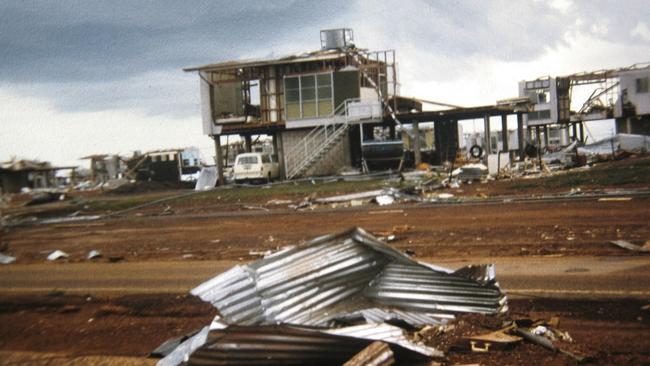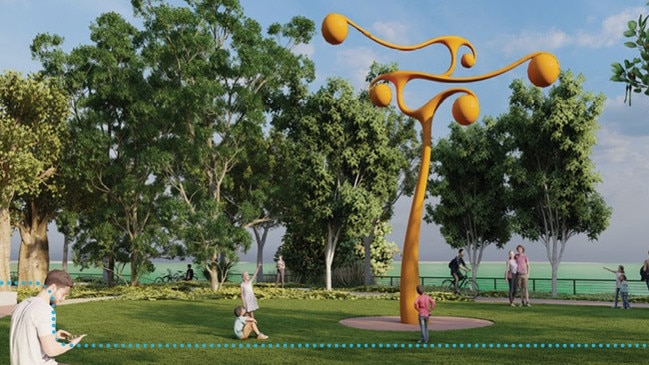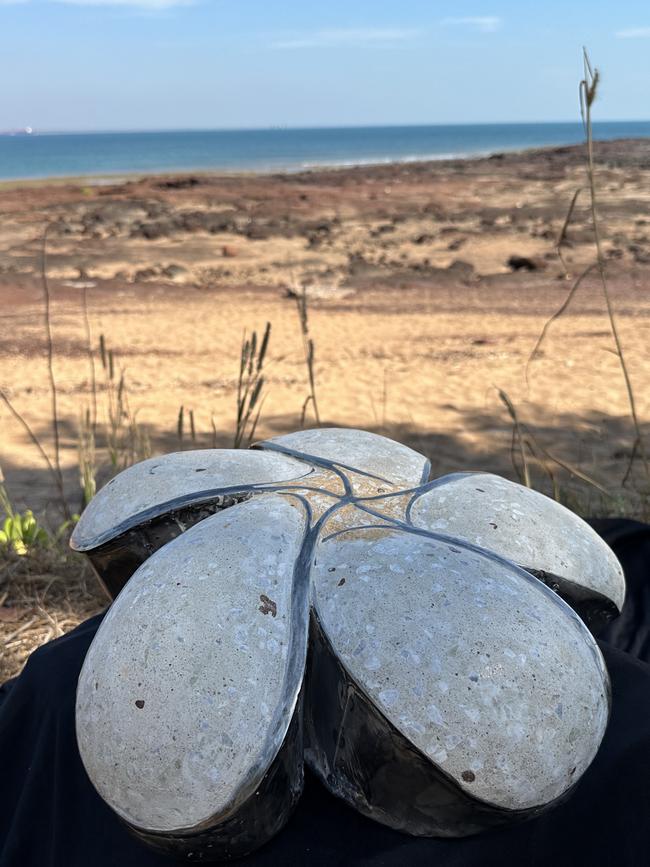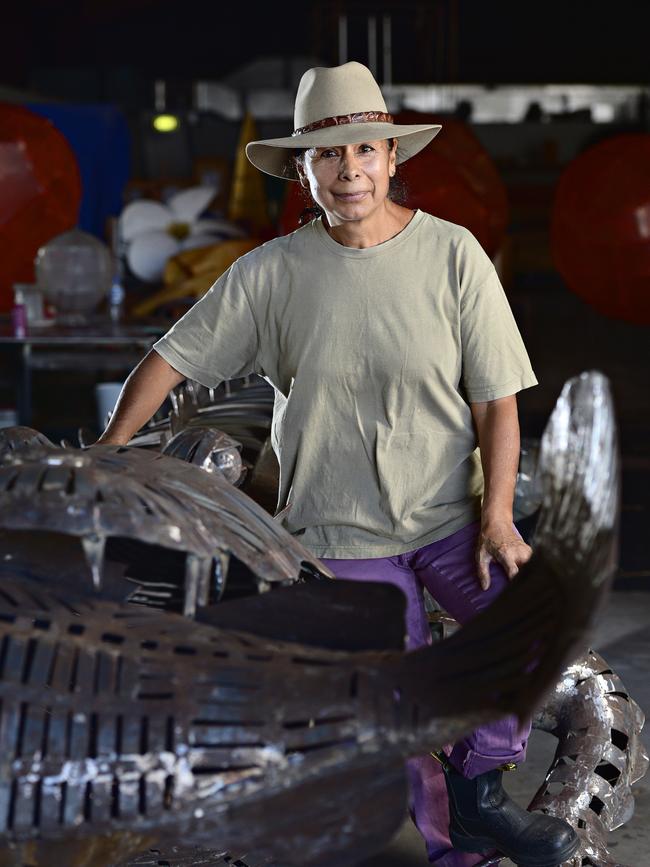Cyclone Tracy memorial organised by survivor group faces funding and approval roadblocks
As Darwin City Council blazes ahead with its controversial ‘fallopian tube’ Cyclone Tracy sculpture, another memorial conceived by survivors is in jeopardy because of a $600k funding shortfall. See their design.
News
Don't miss out on the headlines from News. Followed categories will be added to My News.
As Darwin City Council blazes ahead with its controversial Cyclone Tracy sculpture, another memorial conceived by survivors is in jeopardy because of a $600k funding shortfall.
A Top End local for more than 40 years, Chilean-born artist Techy Masero has envisioned an installation that captures “devastation” and “rebirth” at the site where one of Australia’s worst natural disasters made landfall.
But with the 50th anniversary imminent, organiser Richard Creswick said time is running out to make their vision a reality – a vision which he says has been “sidelined” by the council.

“It feels like the cogs in our machine have essentially been ignored,” Mr Creswick said.
Mr Creswick is the chair of Remembering Cyclone Tracy Inc and a retired journalist, who delivered the last ABC news bulletin before the power went dark on Christmas Eve, 1974.
Sixty-six people died and it took more than three years to rebuild Darwin from the ground up.
“We came up with a proposal for a memorial here (at East Point) because we were concerned about the council’s Bundilla Beach proposal being linked to Cyclone Tracy,” Mr Creswick told the NT News.


“We felt – I felt – that Bundilla Beach had no special connection Cyclone Tracy and the proposed monument, now described as an artwork, did not in any way represent survivors.”
Hundreds attended the 40th commemoration, with some even making a pilgrimage to Darwin.
But the upcoming anniversary has been marred by the grand reveal of Darwin City Council’s $700k “wind-activated kinetic sculpture” two weeks ago, which has been likened to a “mango tree” and “kid’s playground”.

Darwin Lord Mayor Kon Vatskalis rejected criticisms not enough survivors were consulted first before revealing the Bundilla Beach design – claiming on radio last week a messaging “stuff up” meant it was sold as a “permanent monument” rather than a “public artwork”.
Ms Masero said her memorial was designed after speaking to survivors and would be “a visual representation of the cyclone’s journey from sea to land”.
She described the stainless steel curves of the sculpture, which would be seven metres high and as wide as a cricket pitch, as evoking “something chaotic, that emerged from the sea with movement and weight”.

“I came here and walked, and looked, and immersed myself in this landscape … This is the point of strongest connection to this event which has changed the life of so many people,” she said.
“But there is the scale too … I want people to experience that and people will be able to walk underneath these lines that represent the winds and how they evolved.”
The second element involves five steelwork “frangipani flowers” – a common feature outside pre-Tracy Darwin homes – dotted around the reef along with shaded seating.
“I was trying to imagine how it would be to open the door and go out, and see this amazing devastation,” Ms Masero said.


“When I listened to all these stories, the city was bare, and there were no leaves on the trees. “This will let us visualise the positive that came out of the reconstruction. People embraced and took that responsibility.”
At this stage, a $300k gift from the federal government will only fund the frangipani flowers, throwing Ms Masero’s vision in the balance.
A GoFundMe has raised just shy of $1000 and Mr Creswick said appeals to businesses have gone nowhere.
“It’s understandable, as times are tough,” he said.

On top of that, his group must win support from the Aboriginal Areas Protection Authority.
They must also answer Darwin City Council’s concerns about erosion displacing the installation before it can give the green light to build.
But Mr Creswick remains persistent, adding “it’s not important to me as much as it is important to all survivors”.
“If you’ve been following the recent controversy, you would know how significant it is to survivors that, at the 50th anniversary, they finally get a memorial,” he said.
“For many, it will mark their first return to Darwin. For many, it will offer a cathartic release of some pent-up emotions.
“And it’s probably the last significant anniversary that many survivors are going to be here for.”
More Coverage
Originally published as Cyclone Tracy memorial organised by survivor group faces funding and approval roadblocks




